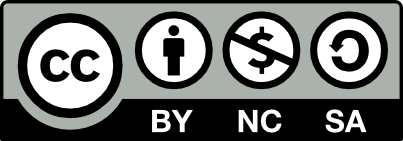Tworzenie obrazu 3D miejsca zdarzenia kryminalnego w oparciu o zapis video z rejestratorów służb interwencyjnych
Wybierz format
RIS BIB ENDNOTECreating crime scene 3D model with body wear camera footage
Data publikacji: 11.12.2023
Archiwum Medycyny Sądowej i Kryminologii, 2023, Vol. 73 (2), s. 159-167
https://doi.org/10.4467/16891716AMSIK.23.013.18688Autorzy
Creating crime scene 3D model with body wear camera footage
The aim of this study is to develop a methodology for creating 3D images of crime scenes based on footage from cameras used by emergency services. To accomplish this, a research experiment was conducted, which consisted of re-enactment of a crime scene and simulation of the actions of the emergency team. The experiment did not illustrate a real case. The scenario was developed and dedicated for the purpose of the research.
The research material of this study consists of footage recorded in digital video format. The footage shows the course of a re-enacted intervention of emergency services at the crime scene. The re-enactment, which was a research experiment, was arranged under conditions close to real ones. The 3D model of the scene was created in three stages: video analysis and 3D reconstruction of the spatial position of the camera; 3D modelling of the figure of the participant with reconstruction of the position similar to the one in the recording; and 3D scanning of the scene of the simulated crime, assembly of individual elements, and scaling to real dimensions.
The result (a 3D model) was presented in the form of a set of images: horizontal projections, vertical sections, and isometric and perspective views of the model. Technical data of the research equipment as well as other relevant information was presented in tables and diagrams.
This study demonstrated that graphic data obtained unintentionally and through alternative recording sources may significantly complement the data collected in the course of routine medico-legal and forensic activities. The use of cameras during the actions of rescue and emergency services allows us to obtain information of significant importance for medico-legal and forensic analyses. The footage from cameras of emergency services makes it possible to obtain a 3D image of the crime scene for further medico-legal and forensic analyses
Coudert F, Butin D, Le Métayer D. Body-worn cameras for police accountability: Opportunities and risks. Comput Law Secur Rev Int J Technol Law Pract. 2015;31:749-762. doi:10.1016/j.clsr.2015.09.002
Bowling B, Iyer S. Automated policing: the case of body-worn video. Int J Law Context. 2019;15(2):140-161. doi:10.1017/S1744552319000089
Korva N, Bennell C, Lalumière ML, Karimullah M. What do you see? Understanding perceptions of police use of force videos as a function of the camera perspective. Behav Sci Law. 2022;40(3):480-503. doi:10.1002/BSL.2578
Urbanová P, Jurda M, Vojtíšek T, Krajsa J. Using drone-mounted cameras for on-site body documentation: 3D mapping and active survey. Forensic Sci Int. 2017;281:52-62. doi:10.1016/J.FORSCIINT.2017.10.027
Turner BL, Caruso EM, Dilich MA, Roese NJ. Body camera footage leads to lower judgments of intent than dash camera footage. Proc Natl Acad Sci U S A. 2019;116(4):1201-1206. doi:10.1073/PNAS.1805928116
Edelman G, Bijhold J. Tracking people and cars using 3D modeling and CCTV. Forensic Sci Int. 2010;202(1-3):26-35. doi:10.1016/J.FORSCIINT.2010.04.021
Buck U, Naether S, Räss B, Jackowski C, Thali MJ. Accident or homicide--virtual crime scene reconstruction using 3D methods. Forensic Sci Int. 2013;225(1-3):75-84. doi:10.1016/J.FORSCIINT.2012.05.015
Buck U, Naether S, Braun M, et al. Application of 3D documentation and geometric reconstruction methods in traffic accident analysis: with high resolution surface scanning, radiological MSCT/MRI scanning and real data based animation. Forensic Sci Int. 2007;170(1):20-28. doi:10.1016/J.FORSCIINT.2006.08.024
Hughes TW, Campbell BA, Schaefer BP. The influence of body-worn cameras, minority threat, and place on police activity. J Community Psychol. 2020;48(1):68-85. doi:10.1002/JCOP.22299
Boivin R, Faubert C, Gendron A, Poulin B. Explaining the Body-Worn Camera Perspective Bias. J Qual Crim Justice Criminol. 2020;9(1). doi:10.21428/88DE04A1.BC4FDEDA
Flies MJ, Larsen PK, Lynnerup N, Villa C. Forensic 3D documentation of skin injuries using photogrammetry: photographs vs video and manual vs automatic measurements. Int J Legal Med. 2019;133(3):963-971. doi:10.1007/S00414-018-1982-6/FIGURES/5
Guilluy W, Oudre L, Beghdadi A. Video stabilization: Overview, challenges and perspectives. Signal Process Image Commun. 2021;90:116015. doi:10.1016/J.IMAGE.2020.116015
Ma M, Zheng H, Lallie H. Virtual reality and 3D animation in forensic visualization. J Forensic Sci. 2010;55(5):1227-1231. doi:10.1111/J.1556-4029.2010.01453.X
Milliet Q, Delémont O, Margot P. A forensic science perspective on the role of images in crime investigation and reconstruction. Sci Justice. 2014;54(6):470-480. doi:10.1016/J.SCIJUS.2014.07.001
Adamczyk M, Sieniło M, Sitnik R, Woźniak A. Hierarchical, Three-Dimensional Measurement System for Crime Scene Scanning. J Forensic Sci. 2017;62(4):889-899. doi:10.1111/1556-4029.13382
Maksymowicz K, Tunikowski W, Kościuk J. Crime event 3D reconstruction based on incomplete or fragmentary evidence material—case report. Forensic Sci Int. 2014;242:e6-e11. doi:10.1016/J.FORSCIINT.2014.07.004
Schofield D, Fowle K. Number 1 Article 4 2013 Part of the Computer Engineering Commons. J Digit Forensics, Secur Law. 2013;8(1). doi:10.15394/jdfsl.2013.1141
Gotsmy WF, Ebert LC, Bolliger M, et al. A picture is worth a thousand words--the utility of 3D visualization illustrated by a case of survived pancreatic transection. Leg Med (Tokyo). 2011;13(2):95-97. doi:10.1016/J.LEGALMED.2010.11.006
Informacje: Archiwum Medycyny Sądowej i Kryminologii, 2023, Vol. 73 (2), s. 159-167
Typ artykułu: Oryginalny artykuł naukowy
Tytuły:
Creating crime scene 3D model with body wear camera footage
Tworzenie obrazu 3D miejsca zdarzenia kryminalnego w oparciu o zapis video z rejestratorów służb interwencyjnych
3D Analysis Laboratory Department of Forensic Medicine of Wroclaw Medical University, Poland
3D Analysis Laboratory Department of Forensic Medicine of Wroclaw Medical University, Poland
Department of Medical Biochemistry, Wroclaw Medical University
Faculty of Architecture, Wrocław University of Science and Technology
Publikacja: 11.12.2023
Otrzymano: 27.07.2023
Zaakceptowano: 24.10.2023
Status artykułu: Otwarte
Licencja: CC-BY-NC-SA

Udział procentowy autorów:
Korekty artykułu:
-Języki publikacji:
AngielskiLiczba wyświetleń: 590
Liczba pobrań: 472
Sugerowane cytowania: Nature